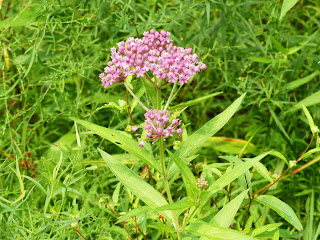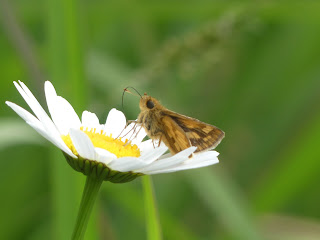Swamp Milkweed
For Throwback Thursday I'm going to show you a Swamp Milkweed from a couple years ago but talk about something I did just yesterday.
The Raritan Headwaters Association got a grant to increase the milkweed population in their meadows and recently planted around 500 Swamp Milkweeds [1] at their Fairview Farm location in Bedminster [2]. Historically I've considered Fairview Farm to be one of the muddier places I routinely go, but our relatively dry spring they need to water them to prevent them from dying [3]. Though some of them are close enough to their buildings so that they can be watered via hoses, some of the areas require more physical labor than that. Towards that end, a couple of us volunteers filled up large tubs of water, pulled them (mostly down) into a meadow, and hand-watered them using watering pots. It took about 2.5 hours in all.
It wasn't grueling work [4], though Wednesday was an unusually cool day for the start of summer, and I could see it being more challenging on the hot/humid days that are almost certainly coming. The hardest part was finding the young Swamp Milkweeds amongst the other vegetation [5]. If anybody else is interested, I suspect RHA would like more help.
 |
| July 22, 2021 at Fairview Farm Photo 148401132, (c) jpviolette, some rights reserved (CC BY-NC) |
[1] Swamp Milkweed has quite a bit of ecological value. They are host plants for a fair number of insects, and their flowers are a big hit with most pollinators.
[2] I think they've also distributed Common Milkweed seeds around the property, though that might be a separate project.
[3] It's possible that the watering is a 1st year activity, and they'll have a better chance of surviving on their own next year once they're older/stronger.
[4] FWIW I'm a thinnish 62-year-old with moderately good health.
[5] I suspect they'll be easier to spot as they grow, and virtually trivial to identify once they bloom.



Comments
Post a Comment